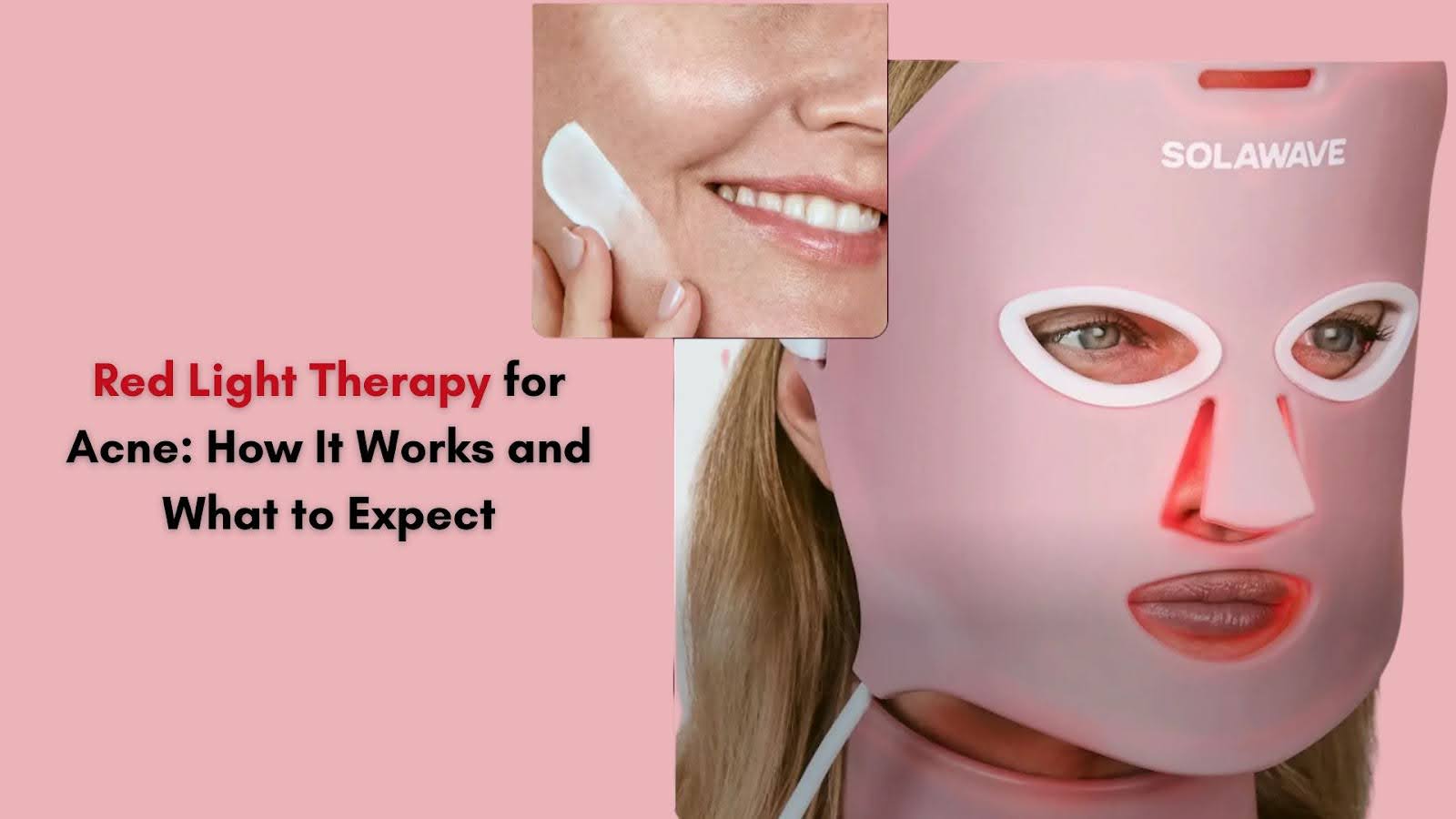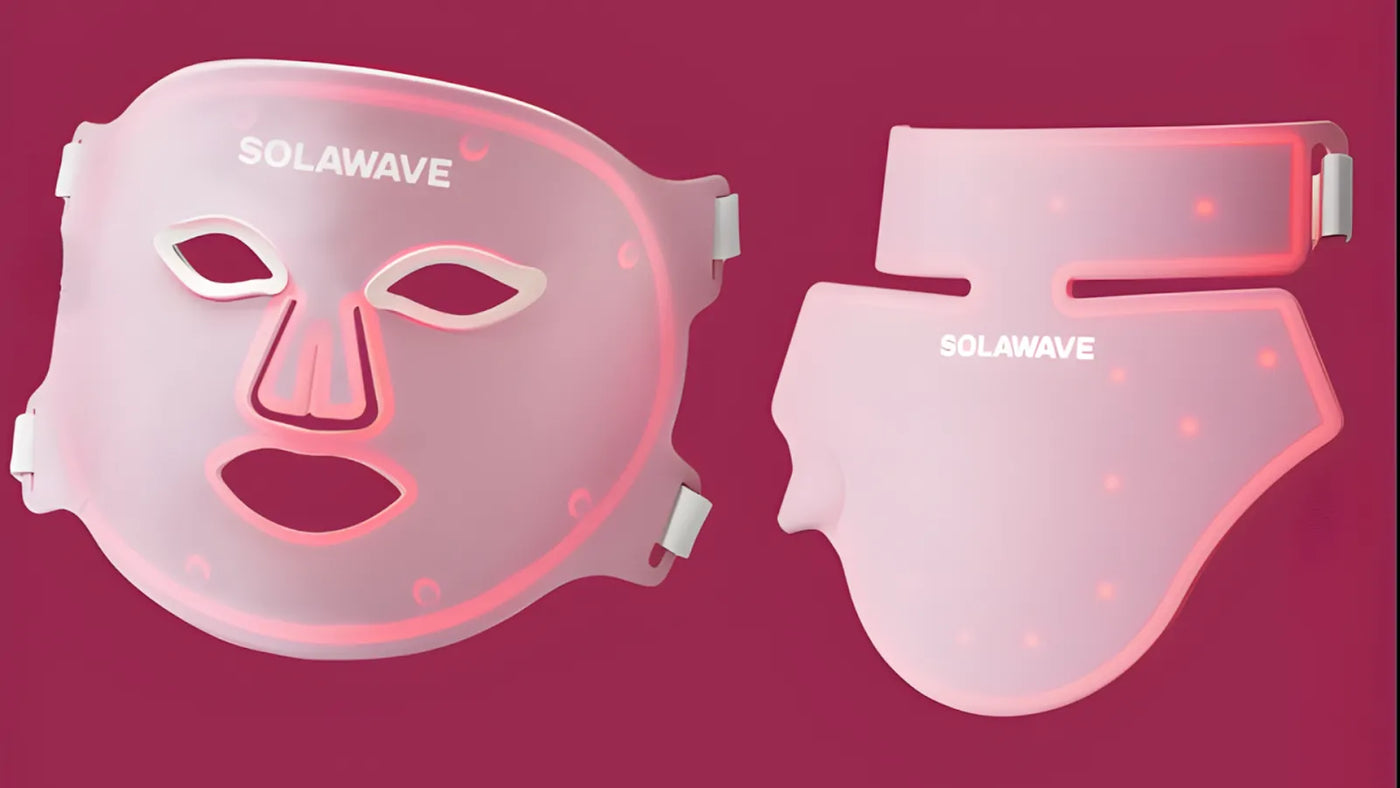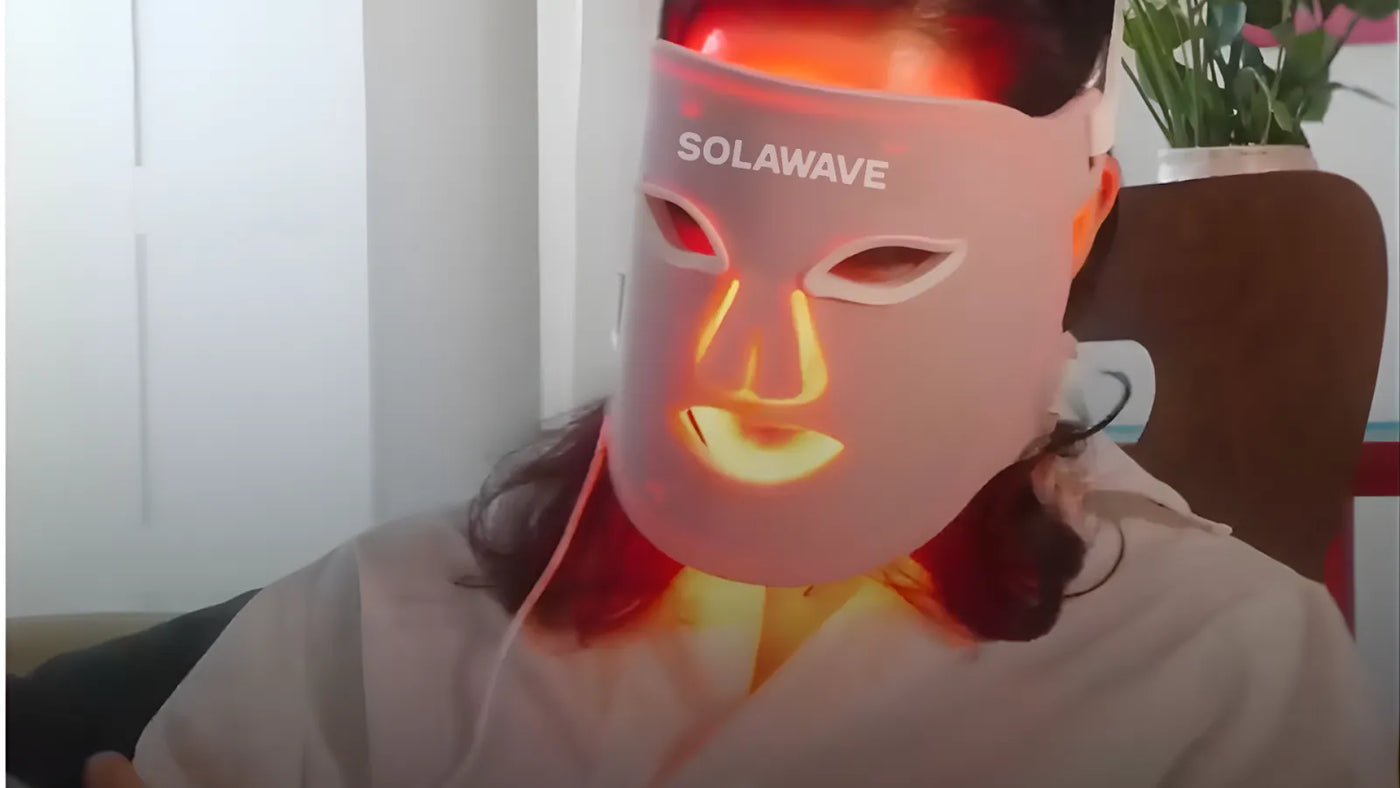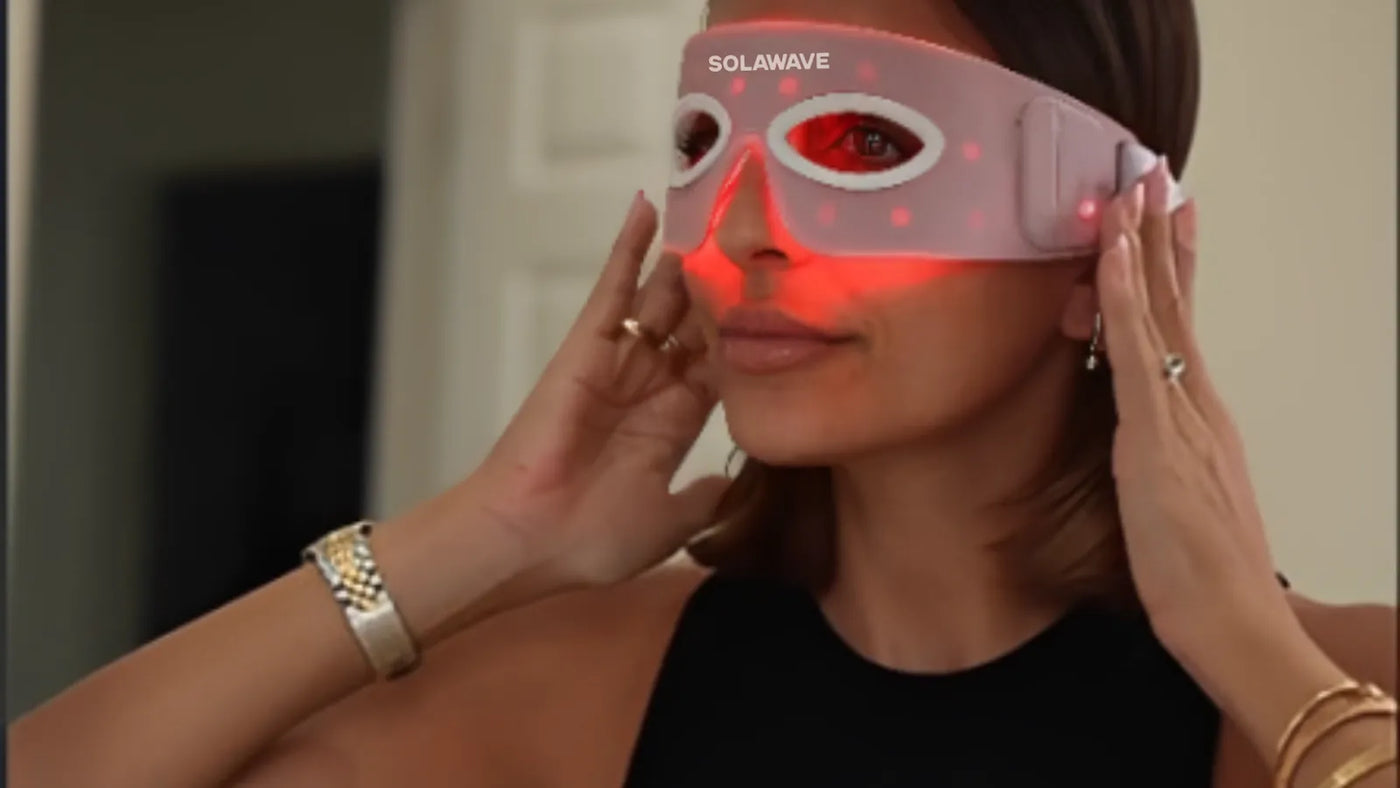

Red Light Therapy for Acne: How It Works and What to Expect
Acne is one of the most common skin concerns for adults and teens alike. While there are countless creams, serums, and prescriptions available, many people are turning to red light therapy for acne as a gentle, non-invasive solution. This guide explains how red and blue light acne treatments work, what the latest clinical research says, and what you can realistically expect from consistent use.
What Is Red Light Therapy for Acne?
Red light therapy for acne uses specific wavelengths of visible red light—usually between 630 and 660 nanometers—to penetrate the skin’s surface and stimulate natural healing processes. Unlike blue light, which directly targets acne-causing bacteria, red light focuses on reducing inflammation, soothing irritation, and supporting skin repair. This makes it especially useful for people with red, swollen blemishes or skin that’s sensitive to harsher treatments.
How Red Light Therapy Works on Acne
The Science Behind Red Light Acne Treatments
Red light therapy works through a process called photobiomodulation. When red light is absorbed by the skin, it energizes the mitochondria (the “powerhouse” of skin cells), increasing cellular energy production. This boost helps skin cells repair damage, reduce inflammation, and produce more collagen.
Key mechanisms include:
-
Reducing inflammation: Red light calms the skin by lowering inflammatory cytokines, which are responsible for redness and swelling.
-
Supporting collagen production: Collagen helps heal acne lesions, reduces scarring, and improves overall skin texture.
-
Regulating oil production: Some studies suggest red light may help normalize sebum (oil) production, which can reduce clogged pores and breakouts.
-
Accelerating healing: By supporting tissue repair, red light therapy helps acne lesions resolve faster and minimizes the risk of post-acne marks.
What Does the Research Say? Clinical Insights
Recent clinical studies show that red light therapy can be a valuable tool for treating mild to moderate acne. In a review of over 1,000 patients using visible light therapies, 89% to 92% achieved partial remission of their acne lesions with red light and blue/red light combinations. Complete resolution was less common, but significant reductions in lesion count and severity were reported.
-
Treatment duration: Most studies used sessions lasting 8–20 minutes, 2–3 times per week, over 6–10 weeks.
-
Results: Gradual improvement is typical, with many users seeing visible changes in skin clarity, texture, and redness by week 4–6, and more pronounced results by week 10.
“Red light alone group had a gradual clinical improvement over time with a 77% response at week 10.”
— Indian Journal of Dermatology, Venereology and Leprology
Red light therapy is FDA-cleared for acne and is considered safe for all skin types, with minimal side effects such as mild redness or dryness in rare cases.
Benefits of Red Light Acne Treatments
-
Non-invasive and gentle: No needles, chemicals, or downtime.
-
Safe for sensitive skin: Red light is gentle and does not damage the skin barrier.
-
Reduces redness and swelling: Especially helpful for inflamed, cystic, or hormonal acne.
-
Improves skin texture: Promotes smoother, brighter, and more even-toned skin.
-
Supports scar healing: Boosts collagen to help fade post-acne marks and scars.
What About Blue Light Therapy for Acne?
Blue light therapy for acne uses wavelengths typically between 405 and 420 nanometers. Unlike red light, blue light directly targets and destroys Propionibacterium acnes (P. acnes), the bacteria responsible for most acne breakouts. When blue light penetrates the skin, it activates compounds within these bacteria, causing them to self-destruct and reducing the bacterial load on the skin’s surface. This makes blue light especially effective for treating active, inflamed pimples and preventing new breakouts.
While blue light is powerful for controlling acne-causing bacteria, it does not address inflammation or skin healing as red light does. For this reason, many acne protocols combine both blue and red light therapies to tackle bacteria and soothe the skin for clearer, healthier results.
(Source: Created Internally)
What to Expect: Treatment Duration and Results
How Long Does Red Light Therapy Take to Clear Acne?
-
Session length: Around 3 minutes per session, depending on device and area treated.
-
Frequency: Most protocols recommend 2–3 sessions per week.
-
Visible results: Many users notice some improvement in redness and texture within 2–4 weeks. More significant changes, such as fewer breakouts and smoother skin, often appear after 6–10 weeks of consistent use.
-
Maintenance: Continued, regular use helps sustain results and prevent new breakouts.
Before and After: Real User Results
Red light therapy’s effects are best seen over time. Clinical studies and user testimonials highlight improvements in:
-
Even skin tone: Reduced redness and pigmentation.
-
Smoother, plumper skin: Softer lines and improved texture.
-
Reduced blemishes: Fewer active breakouts and less swelling.
-
Brighter complexion: Enhanced radiance and glow.
Solawave’s own clinical assessments found visible improvements in blemishes, redness, and skin texture after just 3 weeks of use, with more dramatic results at 8 weeks.
User Tips for Maximizing Results
-
Cleanse first: Always start with clean, dry skin.
-
Consistency is key: Stick to your routine—2–3 times per week for at least 6–8 weeks.
-
Pair with gentle skincare: Use non-comedogenic, hydrating products to support healing.
-
Don’t pick or squeeze: Let the light and your skin’s natural processes do the work.
-
Be patient: Gradual improvement is normal; results build over time.
Solawave: A Leading Choice for At-Home Red Light Acne Devices
Solawave’s award-winning devices combine red light therapy with other advanced technologies—like microcurrent, facial massage, and therapeutic warmth—for a comprehensive at-home skincare experience. Their tools are FDA-cleared, lightweight, and designed for daily use, making them a favorite among dermatologists, estheticians, and celebrities.
Key advantages:
-
Clinically proven to improve skin clarity and texture
-
Combines four advanced skincare technologies
-
Portable, cordless, and easy to use
-
Backed by a 60-day money-back guarantee
Compared to competitors like Omnilux and CurrentBody, Solawave stands out for its integrated approach and added skincare benefits.
Safety and Side Effects
Red light therapy is generally considered safe, with minimal risks:
-
Mild redness or dryness: Usually temporary and resolves quickly.
-
No UV exposure: Red light does not cause sun damage or increase skin cancer risk.
-
No downtime: You can return to normal activities immediately.
Always follow the manufacturer’s instructions and consult your dermatologist if you have any concerns, especially if you have very sensitive skin or underlying skin conditions.
Red light therapy for acne offers a science-backed, gentle approach to clearer, calmer skin. With regular use, you can expect gradual but noticeable improvements in redness, breakouts, and skin texture—without the harsh side effects of traditional acne treatments. For those seeking an at-home solution with proven results, Solawave’s red light devices are a smart investment in your skin’s health and confidence.
Frequently Asked Questions
Q. What is the best red light therapy for acne?
The best red light therapy devices for acne are FDA-cleared, use wavelengths between 630–660 nm, and offer consistent, even coverage. Solawave, Omnilux, and CurrentBody are top-rated options recommended by dermatologists and users for their clinical results and ease of use.
Q. Does red light therapy help cystic acne?
Yes, red light therapy can help reduce inflammation and swelling in cystic acne, making lesions less painful and supporting faster healing. For severe cases, it may be used alongside other treatments for best results.
Q. How long does red light therapy take to clear acne?
Most users see visible improvements in 4–6 weeks, with optimal results after 8–10 weeks of regular use. Sessions typically last 3 minutes, 2–3 times per week.
Q. What are the side effects of red light acne treatments?
-
Mild redness or dryness (temporary)
-
Rarely, slight irritation or peeling
Q. Can I use red light therapy with other acne treatments?
Yes, you can safely combine red light therapy with most topical or oral acne medications, but always check with your dermatologist first.





















